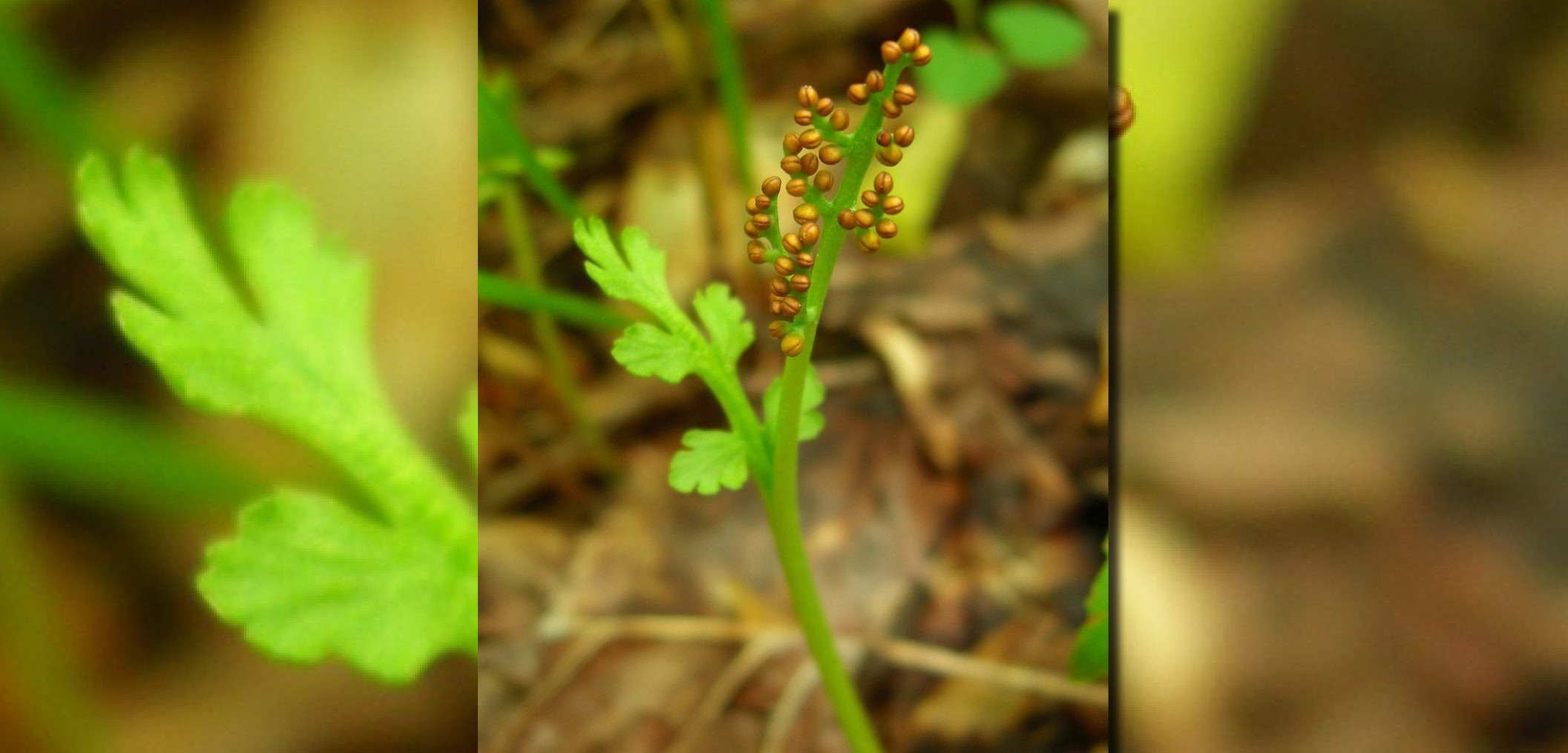
Species of the week #105 – chamomile grape-fern
The chamomile grape-fern is a minimalist. One stem, one twig, a few fronds, that has to be enough. Ferns, one of the oldest plant groups in the world, manage without evolutionary achievements such as inflorescences and seeds. Instead, they produce fine spores that are spread by the wind. Pre-sprouts grow from them on the ground, and male and female organs form on their undersides. In a way that is not yet fully understood, the seed and egg cell come together and a new plant emerges.
| Distribution status in Germany | Threatened with extinction |
| Remaining occurance | South Brandenbrg, North Saxony |
| Last sighting in Germany | current |
| Habitat | Calcareous, sparse rough grasslands |
| Threat | Fungicides, fertilisation, lack of grazing |
The chamomile grape-fern occurs in Central Europe, often associated with the common moonwort (Botrychium lunaria), and is threatened with extinction throughout Germany. At European level, it is on the list of endangered species. It prefers lime-poor, acidic and sandy sites with few nutrients. The chamomile grape-fern is a deciduous, perennial herbaceous plant that grows to a height of 10 to 20 centimetres. The stem has a red tinge at the base.
Since the chamomile grape-fern is small-growing and not very competitive, it prefers places with a sparse vegetation cover. Suitable sites include roadsides, slightly base-rich to slightly acid-rich, sparse forest sites and sparsely vegetated ruderal sites such as sand pits. The lime-avoiding plant also prefers moderately dry sandy and silicate grasslands.
In Germany, the chamomile grape-fern has always been very rare, as only the Baltic Sea coast lies in the main European range of the species. Like ¾ of the occurrences in Germany, the coastal populations have also disappeared in the last 70 years.
One of the main reasons for this is the abandonment of historical forms of forest and land use. If use is discontinued, forests and rough grasslands that were once poor in nutrients grow over. The process is exacerbated by nutrient inputs from polluted air and ammonia and fertilisers from livestock farming.
Political necessity:
– Safeguarding the remaining habitats
– Wide protective strips to intensively used agricultural and forestry areas
– Promotion of extensive agriculture
– Improvement of air quality
Find more species of the week here
Photo : By Jason Hollinger – MoonwortUploaded by Amada44, CC BY 2.0, https://commons.wikimedia.org/w/index.php?curid=24212956
